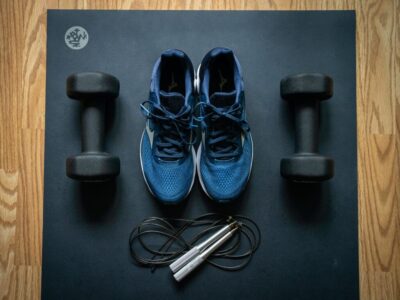How to Turn Your Hike into an Outdoor Workout
On its own, hiking combines the beauty of nature and aerobic activity. What is so great about this activity, though, is that you can decide how intense you want it to be. This makes it a great activity for those looking to stay active while taking care of themselves. Also, hiking gets you out into nature, offering a chance to disconnect from daily stresses to enjoy some time outdoors.

However, if you are trying to get fit, maintain a diet or just enjoy pushing yourself, there are plenty of ways to transform your hike from a casual walk through the woods to a challenging and rewarding workout. Here’s how:
Increase Your Pace
In general, hiking isn’t about speed, but rather endurance, which requires keeping a moderate and manageable pace. For example, Naismith’s Rule states you should allow around one hour for every three miles, plus an additional hour for every 2,000 feet of ascent. However, at that speed, there might be few chances for you to get your heart rate up and to feel like you are working out.
However, you can change this quite easily. Simply pick up the pace. If you want to take this one step further, consider taking up speed hiking. Also known as fastpacking, this sport is becoming more and more popular because it allows hikers to travel further from the hustle and bustle of regular life; many fastpackers cover distances of 30 to 40 miles a day!
While you might not want to go that fast, a quicker pace on moderate hikes can increase your endurance and improve your cardio. Like with any sport, it’s important you train before your trip to avoid burning out or getting hurt. Stick to trails you’re familiar with, and slowly increase your speed over time. To help you get faster, you can use one of the countless apps designed to track distance, elevation and time. These can be very helpful as they allow you to record results so that you can push yourself to beat previous times or distances. However, all of these tools use GPS and ask for other personal information, so having a secure connection is highly recommended.
Repeat Hills
Hills provide excellent cardio and strength workouts. When walking uphill, you’re forcing your muscles to do more work, which means you’re burning more calories and toning your legs. But it’s not just your legs that benefit. Hill walking benefits your entire body, building stamina by increasing oxygen flow. So whenever you get to a hill, it’s a good idea to repeat it to up the ante of your hiking workout.
But don’t just focus on the incline. Going down is also important and provides your legs a unique workout by forcing them to work against the pull of gravity. Since we don’t often use our muscles in this manner, it can feel more strenuous than uphill hiking, especially around the hamstrings, knees and hips.
Walking hills offer benefits beyond just working your muscles. Going downhill helps lower blood sugar levels and LDL cholesterol, whereas uphill walking helps decrease triglycerides. Combined, you receive both benefits, making this much more of a workout than running on a treadmill.

Exercise While You Hike
There are several exercises you can perform during your actual hike. Depending on how in shape you are, you can do some light jogging during certain stretches of the trail to increase your cardio activity. Even just five minutes at an accelerated pace can help increase your heart rate and get the oxygen flowing. If you’re a beginner, get in your jogging on flatter terrain. If you really want to push yourself, jog while going up a slight incline. The more you train, the easier it will be to take on challenging ascents.
Speaking of ascents, if you don’t want to jog up them, you can still get a great workout by slowly lunging up them. It’s an excellent strength training exercise, which in turn will help you burn some more calories. If you want something even more enjoyable and don’t mind the funny looks you might get from those passing by, try skipping. It burns more calories than walking and has less impact than running.
Overall, there are plenty of ways you can increase the challenge of your hikes, from adding in some workouts to simply pushing yourself to beat your previous hiking times. Whatever you choose, make sure to pay attention to your body and stop if you feel light headed or serious pain.
How do you incorporate workouts into your hikes? Have you ever tried any of these methods? Let us know in the comments below.
About the Author: Caroline is writer for eHealth Informer and hiking enthusiast. As she has gotten older, she has turned to hiking as a great way to stay fit and also disconnect from the stresses of her day-to-day life. Nowadays, she’ll often skip a trip to the gym in favor of a fast hike, as she finds it equally challenging, but more invigorating.













